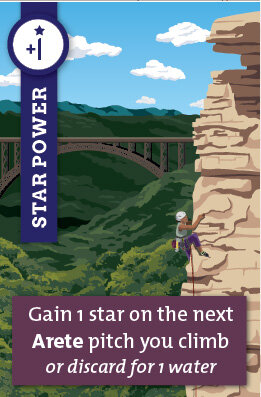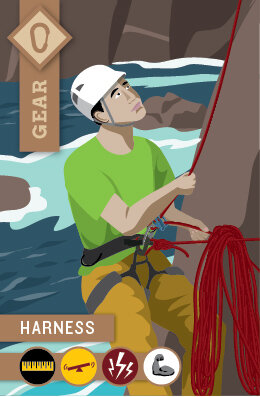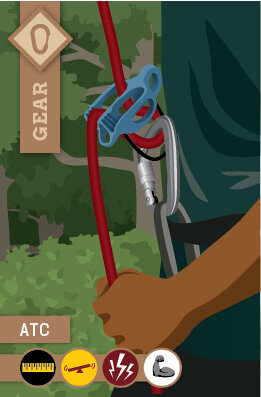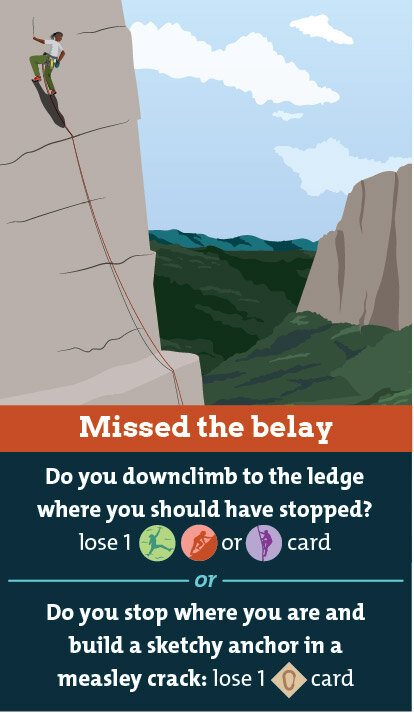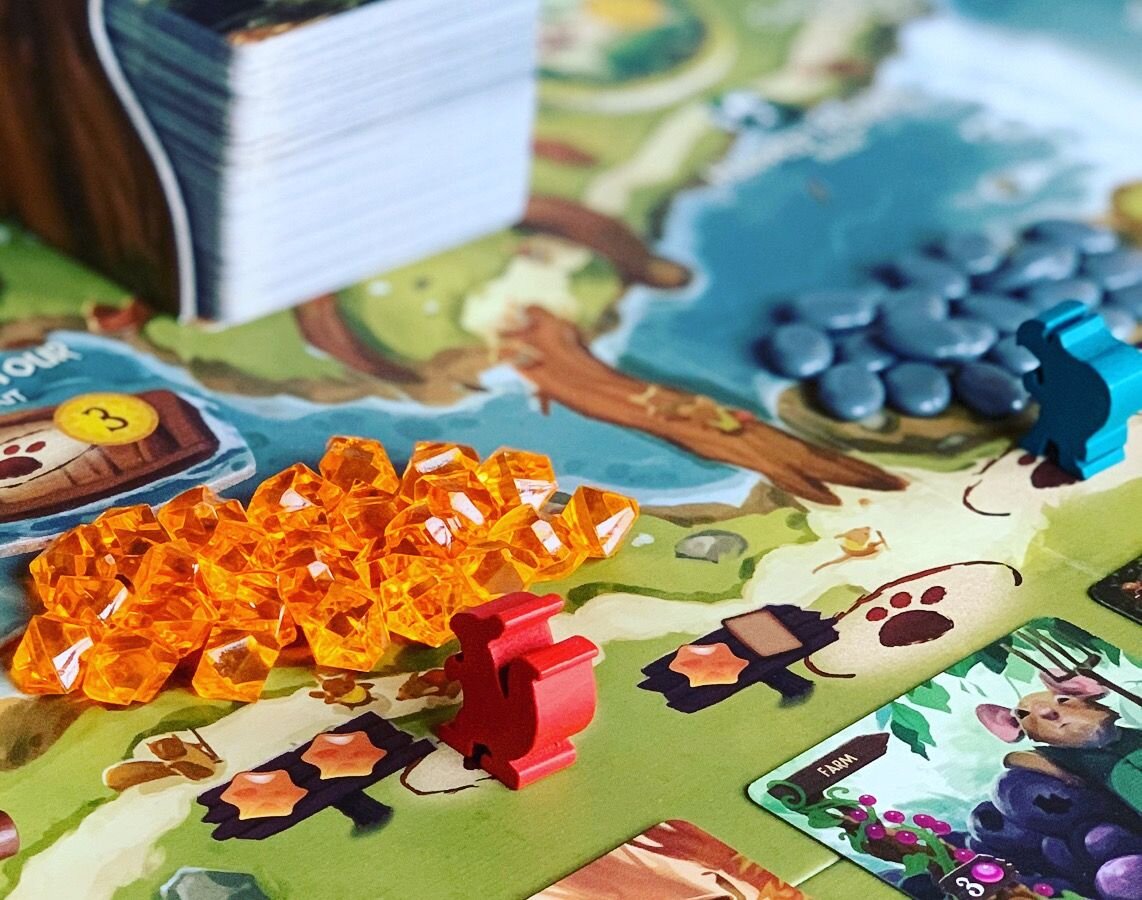Glossary of terms
Both climbing and board gaming have languages of their own. This post will clear up some common terms we use while climbing and in game development. How many times have you lowered your friend off a route and heard them say “Wow, I can believe I ended up going bolt to bolt after getting so pumped"” or finished up a game to hear “I like the simultaneous action selection and card drafting mechanics, but its not as crunchy as I would have liked”?
Climbing terms
Arete: is a vertical ridge of rock, or you can think of it as being on the outside edge of a sharp corner. This is a super fun feature to climb because it creates the sensation of being very exposed and surrounded by air. They are also very photogenic. Can anyone name the route or location of the climb depicted below?
Belay: when one climber secures the rope for the other. The climber securing the rope is referred to as the belayer and uses a belay device such as an ATC or GriGri to hold the rope and protect their partner should they fall. Belay is also used as a noun to refer to the location at which climber belays their partner from.
Stem: is when a climber spans between two walls and uses opposing forces to generate friction and progress up the wall. This technique is often applied in corners and chimneys.
Sloper: is a climbing hold that is generally smooth with no defined edges or features to grip. These holds are a common nemesis and feel insecure but can be used very effectively when applying maximum surface area to create friction and appropriate body position to manipulate the direction of force applied to the hold.
As with any activity, some of these terms are picked up on day one and quickly become part of our lexicon but I’m still learning too and hear terms I’m unfamiliar with, especially if we were to look at aid climbing for example.
Game terms
Euro games: are strategy based board games that rely on a player’s decision making to determine how well they perform. There is often very little chance or luck involved and typically involve gaining, managing, and spending resources in some way to gain points to win. Often, there is little direct player conflict and players are not eliminated from the game. These are sort of the antithesis to “Ameri-trash” or dungeon crawlers. If you have other suggestions, or want to expand please leave a comment! Examples include Catan, Puerto Rico, and Brass.
Mechanic or mechanism: refers to the process of how a game is played. These are the basic actions that players take to make the game work and are frequently used to describe a game. For an extensive list and definition of game mechanics, check out Board Game Geek Mechanics.
Worker placement: is a game mechanic, in which a players typically take turns choosing to perform one action from a limited number of possibilities and are also referred to as “action selection”. There are often limited worker locations and competition between players to place workers at specific locations (aka take specific actions). One of our favorite worker placement games is Everdell, in which you send your forest critters to certain locations to gain resources or perform actions!
Example of a forest critter worker placement at the refinery picking up two resin in Everdell. Photo by The Game Cupboard - Instagram @thegamecupboard.
D6: is a 6-sided dice. This nomenclature is applied to dice with any number of faces, 20 faces = D20, 12 faces = D12 and so on.
Crunchy: generally refers to how technical and complicated a game or game mechanic is. I think of this as a measure of how much thinking I have to do to execute a turn or action, typically because there are many rules, exceptions, or criteria that must be satisfied. There is likely some nuance between complexity and crunchiness and this definition won’t satisfy everyone. What would you add to the definition of crunchy?
In our recent playtesting, we’ve been asking non-climbers if any of the jargon interferes with understanding the game rules. We’ve found that the rules of the game and the mechanics are fairly intuitive based on design solutions such as the artwork, icons, and color schemes. Excitingly, some players have said they learned something about climbing or even want to try climbing after playing! That inspired me to put together this brief glossary of terms and we look forward to building on it to include a more comprehensive glossary in the rulebook to teach even more climbing terms and create a more immersive experience playing First Ascent.
-Garrett

